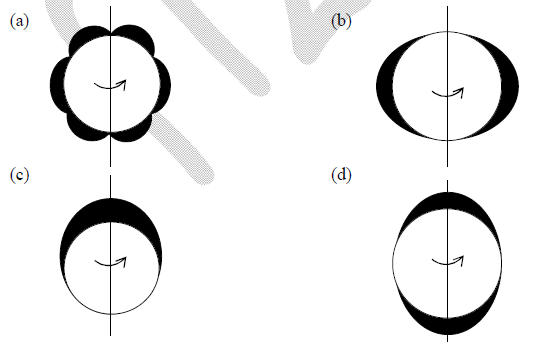A spherical conductor, carrying a total charge $Q$, spins uniformly and very rapidly about an axis coinciding with one of its diameters. In the diagrams given below, the equilibrium charge density on its surface is represented by the thickness of the shaded region. Which of these diagrams is correct?
I am not sure if quasistatic approximation of magnetic field applies here since it is mentioned that the sphere is spinning very rapidly. Conductor is mentioned i suppose to say in other words that the charges will reside on surface no matter what.
And i know that magnetic field inside a spinning spherical shell is uniform and points in the direction of rotation vector ${\omega}$ and outside, it is akin to that of a dipole situated at the origin.
The electrostatics part is unclear to me since the charges in one hemisphere cannot interact through electric field with the charges in the other hemisphere since electric field has to pass through the conductor but inside, the conductor it has to be zero.
I am not sure how exactly to use all these facts or just simply say that the centrifugal force is huge due to the high rotation speed and hence charges are just pushed away from the axis in which case the answer without any effort is option b??
EDIT
I may have made a mistake in assuming electric field inside the conductor to be zero since that is only true for a conductor in electrostatic equilibrium.


